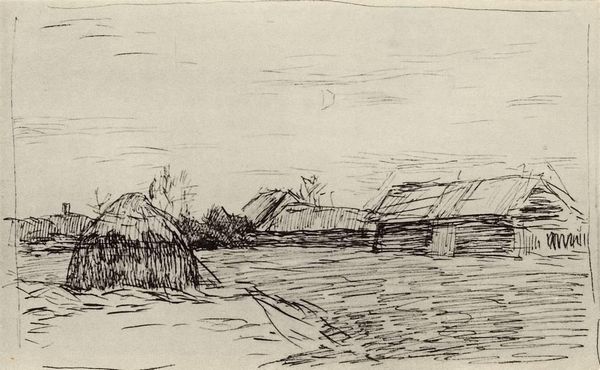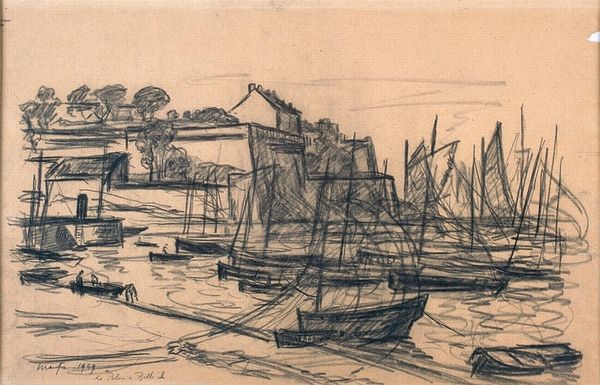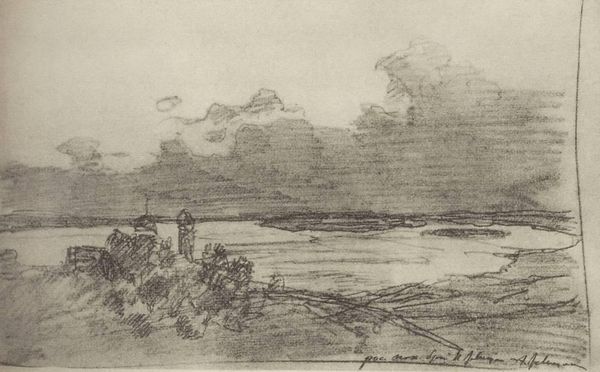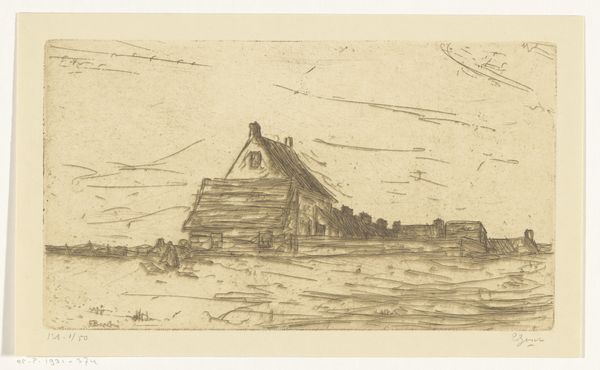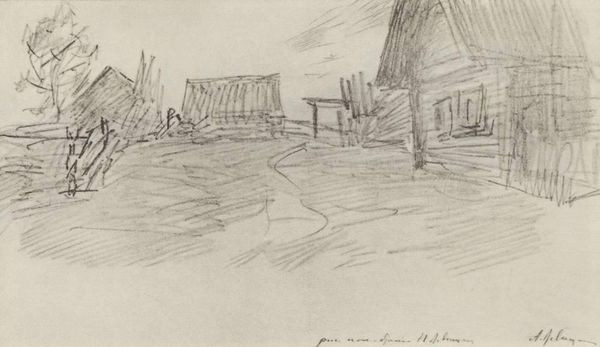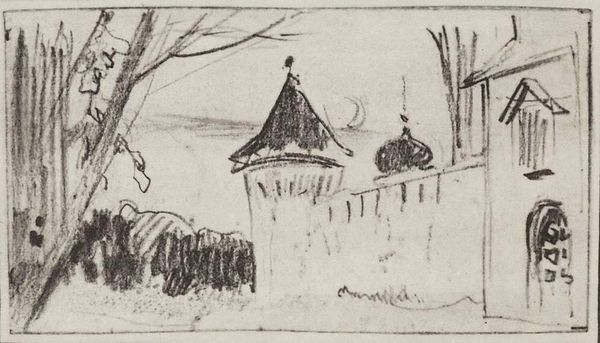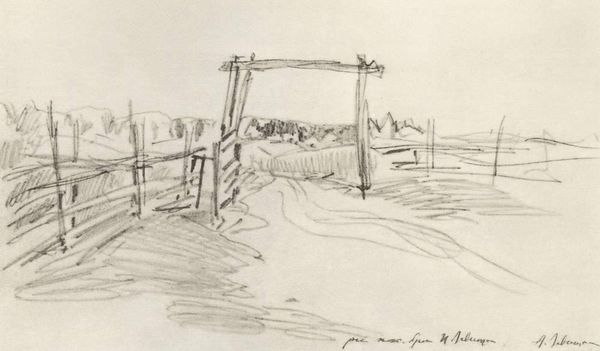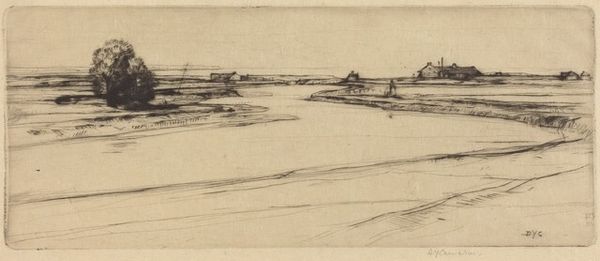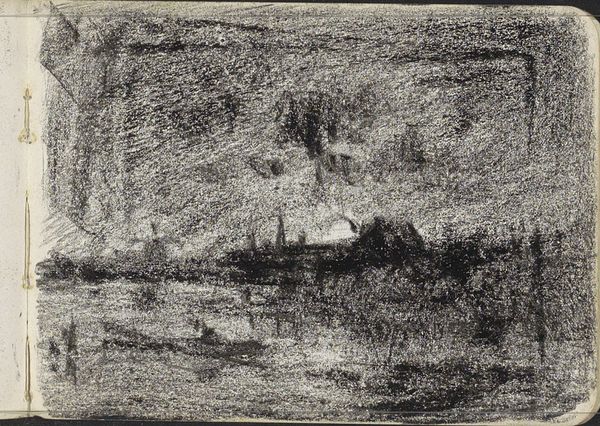
print, etching
# print
#
etching
#
landscape
#
realism
#
monochrome
Copyright: Public domain
Editor: This is Isaac Levitan's "High Waters," an etching from 1885. I'm immediately struck by how stark and almost desolate it feels, even though it's just a landscape. The limited value range adds to that. What do you see in this piece? Curator: It's a study in contrasts, isn’t it? Consider how Levitan orchestrates the composition. The starkness of the monochrome palette highlights the interplay of light and shadow. Observe how the angular lines of the buildings and logs in the foreground create a sense of groundedness, sharply contrasting with the horizontal expanse of the flooded landscape. How does this structural dichotomy affect your perception of space? Editor: I guess it does give a sense of depth, but the details are still quite faint, adding to the moodiness. The houses in the background are barely there! What can you say about the textures? Curator: The etching technique itself is paramount. Notice the fineness of the lines and how Levitan varies their density to create different textural effects. The roughness of the logs, the relative smoothness of the water, and the cloud cover suggested only through careful manipulation of tonal values... Consider the technical skill needed to produce such a range using a single medium and color. Does the artist use this to guide the eye in any meaningful way? Editor: I hadn't really thought about how the medium was contributing to the affect of the piece! Thanks for that. I see now that my eyes go where the value contrast is stronger, so I guess that's one way the eye is guided by the technique. Curator: Exactly. The artist employs technique to guide you. By exploring such fundamental visual language, we unveil the aesthetic and structural intentions embedded in the work. Editor: I appreciate how focusing on the art elements really enriched my understanding! It seemed flat at first glance. Curator: Indeed. Formalist analysis provides invaluable insight. I find something new with each return, always.
Comments
No comments
Be the first to comment and join the conversation on the ultimate creative platform.
